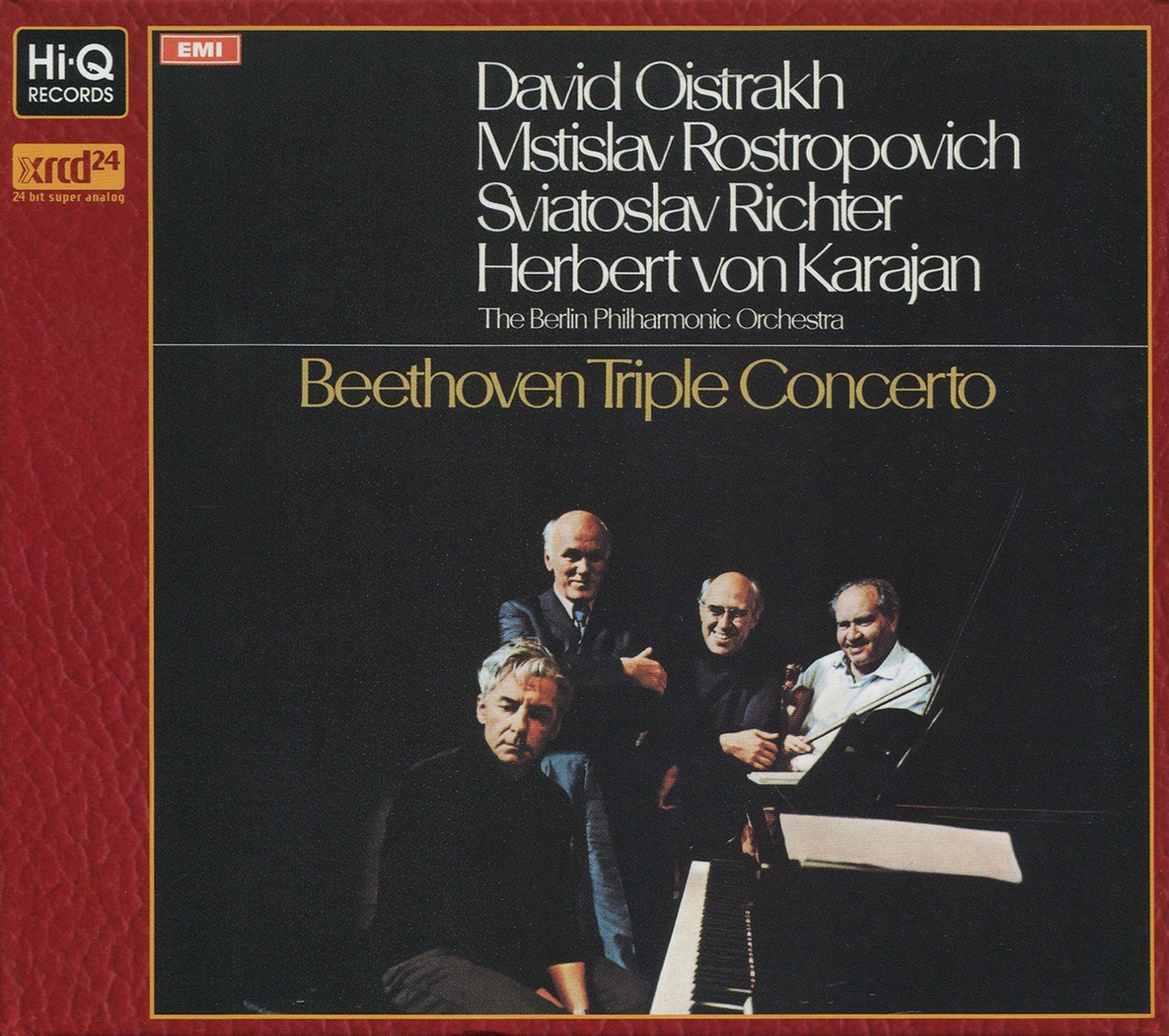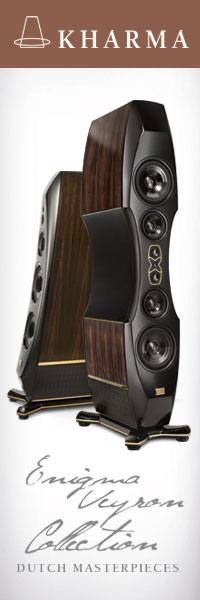
 I first corresponded with Kevin Berg during the heyday of Japan Victor Corporation’s XRCD years. Mr. Berg at that time was working for JVC and was the person to whom an American reviewer applied for CD samples. He was more than just generous, he was responsive: when I wanted a copy of Bartok’s Concerto for Orchestra to compare with RCA’s issue of the same performance, he provided one even though it was not a new release. (Incidentally he XRCD won, even though the data on both discs is presumably identical.) I have noted elsewhere that XRCDs disappeared for a couple of years and then reemerged under the aegis of a London label, Hi-Q Records. They are still manufactured in Japan by JVC to the highest Redbook standards in the industry (XRCD24), they still come in a handsome cardboard case using only one layer of plastic—to hold the disc—and they are even more expensive than they used to be (inflation, the Euro and all). Mr. Berg has since gone on to work for Elusive Disc and it is my good fortune that he has not forgotten my admiration of these extraordinary Japanese CDs. Every so often I get a review copy.
I first corresponded with Kevin Berg during the heyday of Japan Victor Corporation’s XRCD years. Mr. Berg at that time was working for JVC and was the person to whom an American reviewer applied for CD samples. He was more than just generous, he was responsive: when I wanted a copy of Bartok’s Concerto for Orchestra to compare with RCA’s issue of the same performance, he provided one even though it was not a new release. (Incidentally he XRCD won, even though the data on both discs is presumably identical.) I have noted elsewhere that XRCDs disappeared for a couple of years and then reemerged under the aegis of a London label, Hi-Q Records. They are still manufactured in Japan by JVC to the highest Redbook standards in the industry (XRCD24), they still come in a handsome cardboard case using only one layer of plastic—to hold the disc—and they are even more expensive than they used to be (inflation, the Euro and all). Mr. Berg has since gone on to work for Elusive Disc and it is my good fortune that he has not forgotten my admiration of these extraordinary Japanese CDs. Every so often I get a review copy.
Beethoven’s Concerto for Violin, ‘Cello and Piano (usually shortened to Triple Concerto) was recorded at the Jesus-Christus-Kirche, Berlin in 1969. It is a piece of music I’d have never thought to review. In the classic book by J.W.N. Sullivan, Beethoven: His Spiritual Development, that I read donkey’s years ago, I don’t recall that the Triple Concerto is so much as mentioned. In four decades of collecting discs, I’ve never thought of acquiring a copy. In four decades of music listening, mostly recorded but on occasion live, I’ve never heard the concerto or even read of it being performed. It is clearly not one of Beethoven’s popular, or significant, compositions. But it was of very special interest to me because I vividly recalled Sviatoslav Richter’s lengthy anecdote of the recording session in Bruno Monsaingeon’s documentary film, Richter, The Enigma. Among the three players, as well as with von Karajan, there were frictions and factions and interpretive disagreements. And ultimately, the performance was not particularly well received by those arbiters of taste whom Gully Jimson, in a fictional context, referred to as crickets.
Which, to my mind, simply underlines a primary danger of paying too much attention to or granting superior authority to, critics in general and music critics in particular. I have come to like the music for exactly what it is (though I can appreciate that among Beethoven’s oeuvre it is not the most appealing, or the most original, or the most jam packed with emotional and spiritual content). Nevertheless, it’s great music.
Deryck Cooke, a musicologist known for his contribution orchestrating Mahler’s unfinished Tenth Symphony and for several important books on music, wrote the liner notes for this disc, liner notes furthermore that are singularly concise and insightful. A great concerto, I quote Cooke at length, may belong to one, two or all of three main categories. (1) It must be an outstanding work of art, a feat of imagination and technique. (2) It will often be an aesthetic feast of melodic and harmonic beauty… (3) It may further be an emotionally powerful work. Beethoven’s concertos (unlike his symphonies) normally belong to the second category, with odd movements straying into the third. All, of course, belong to the first; but the Triple Concerto is unusual in belonging to this category alone. Except in the slow movement it is neither music of the heart nor of the senses; but it is an outstanding work of art, a feat of imagination and technique.
There—and put much better than I could ever hope to: artifice, beauty, and emotion. Cooke also notes that this is the only example of a concerto with this combination of soloists that was written by a great composer. It is unique. Coming in the same period as early masterpieces like the Eroica Symphony and the Violin Concerto (with its unprecedented opening bars!), it has always been something of an outcast, never popular with the public or with musicians. Cooke explains the rather formal simplicity of the thematic material by pointing out that, in order to be an actual triple concerto, the theme(s) have to be stated four times, by the orchestra, the violin, the violoncello, and the piano. This presents a very real challenge. “Obviously the use of expansively lyrical or passionate themes would result in a structure so vast as to be unmanageable; hence the formal nature of Beethoven’s thematic material, which is revealed as a stroke of genius in the context.”
Mr. Cooke goes on to discuss the challenge of balancing the three solo instruments in an orchestral venue. “The chief snag, of course, is the deep, dark-toned cello, which is in danger of being inaudible. Beethoven took the only course—the drastic one of bringing the instrument up out of the depths, by writing most of the time for its powerful top string…simple melodies and straight-forward study-like scales were all that he could expect from even a top-ranking cellist when playing at this precarious, exposed height, in a complex ensemble.”
Jane Austin writes of one of her characters that he never looks at a woman but to notice her faults. In a similar way, the Triple Concerto may be faulted—it can be faulted for what it does not contain—emotional intensity, sustained melodic beauty—but the greater fault would lay with the trammeled listener who misses what an outstanding a work of art the Triple Concerto is. Indeed, the analytical approach is something of a trap. For while it is true that Beethoven composed other music of greater beauty and deeper emotion than the Triple Concerto, in my opinion the Allegro and especially the Largo are both beautiful and emotive. The Rondo is perhaps closer to the first category Cooke describes, a work of art that does not provide a feast. Nonetheless there is a feast to be had, in the excellence of the performance, in the flawless way the three soloists click.
Some compositions more than others demand technical and aesthetic mastery. Mozart’s sonatas, an obvious example, in the hands of a lesser musician can be downright boring, but in the hands of a master like Clara Haskil, they are awe-inspiring. In the case of the Triple Concerto the challenge is even greater: three highly individual musicians must work as one. And the three soloists in this recording are not only acknowledged giants of twentieth century musicianship, they are all three firing on all cylinders. It is an inspired performance.

Stereo Times Masthead
Publisher/Founder
Clement Perry
Editor
Dave Thomas
Senior Editors
Frank Alles, Mike Girardi, Russell Lichter, Terry London, Moreno Mitchell, Paul Szabady, Bill Wells, Mike Wright, and Stephen Yan,
Current Contributors
David Abramson, Tim Barrall, Dave Allison, Ron Cook, Lewis Dardick, John Hoffman, Dan Secula, Don Shaulis, Greg Simmons, Eric Teh, Greg Voth, Richard Willie, Ed Van Winkle, Rob Dockery, Richard Doron, and Daveed Turek
Site Management Clement Perry
Ad Designer: Martin Perry





Be the first to comment on: